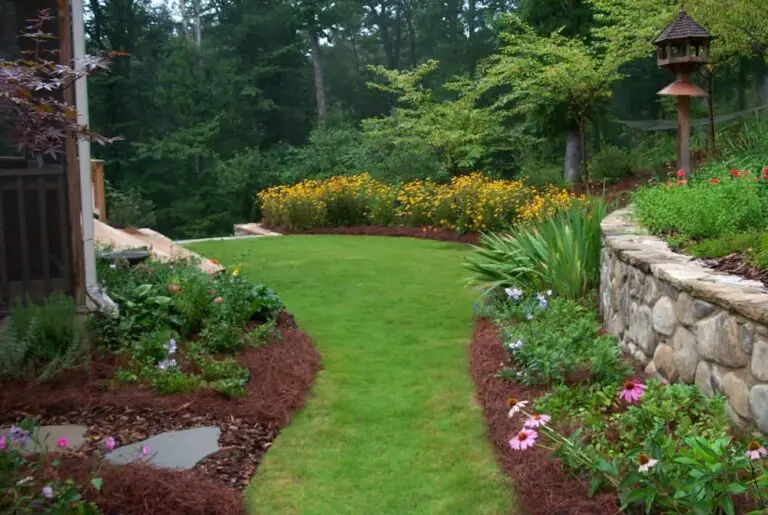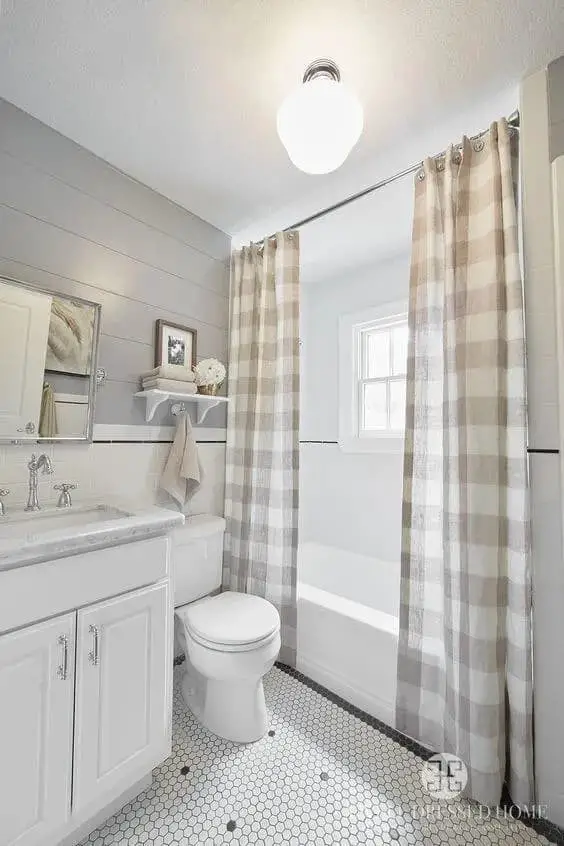Brick Driveway: Cost, Installation, Pros And Cons
Brick pavers in driveways have stood the test of time, offering a unique blend of durability and aesthetic appeal. With a history spanning thousands of years, it’s no surprise that this material remains a popular choice for roadways, buildings, and residential structures alike. In this article, we’ll delve into the world of brick driveways, exploring the essential information you need to know, including ideas, costs, benefits, and disadvantages.
This comprehensive guide aims to provide you with all the necessary insights to make an informed decision about whether a brick driveway is right for you.
Types of bricks
While the term ‘brick’ often conjures up images of sturdy, traditional bricks, there’s more to the story than that. In fact, different types of bricks exist, each designed for specific purposes in construction. For instance, understanding the various types of bricks can be crucial when it comes to selecting the right one for a driveway, ensuring a durable and long-lasting outcome.
Burnt clay bricks
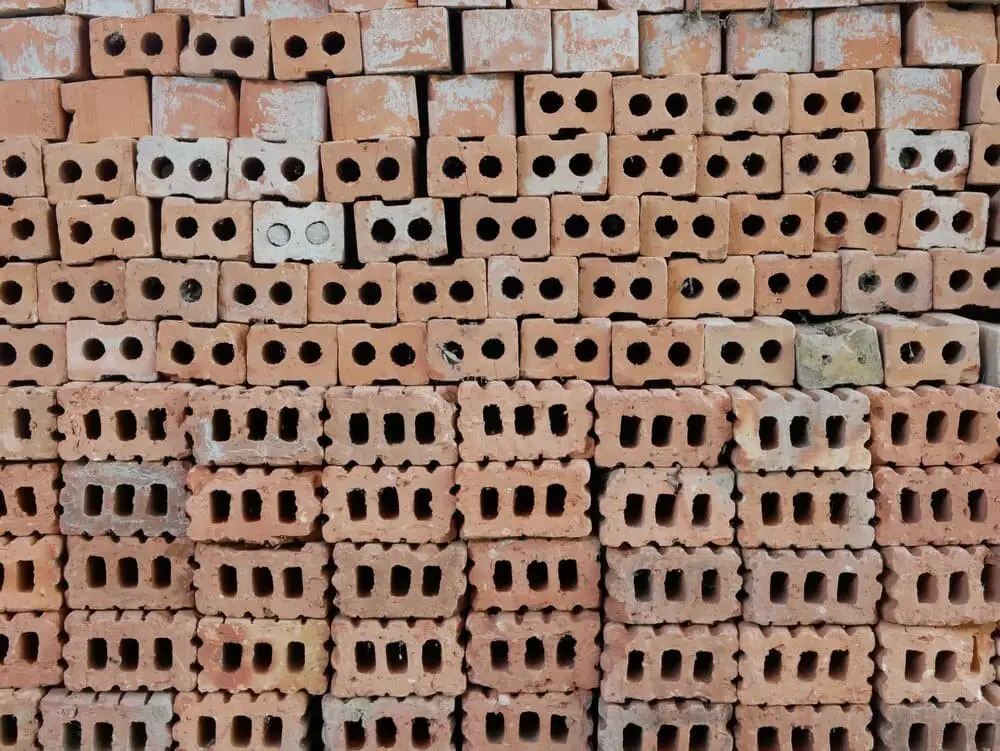
One of the most ancient and enduring building materials is the humble brick, crafted from hardened clay. The iconic red hue of classic bricks has been a staple in construction for centuries, with their primary uses including foundation work, masonry walls, and column structures. While they can also be employed for driveways, a crucial consideration is the application of mortar to ensure durability.
Sand lime bricks
While grey is the most common color variation, pavers can come in a range of pigments. Their durability and ability to withstand heavy loads make them an ideal choice for driveways and large-scale construction projects. One notable characteristic of these pavers is their precise edges and cuts, which reduce the need for mortar during rendering processes.
Engineering bricks
The most resilient type of bricks is specifically designed for constructing infrastructure such as manholes, tunnels, sewers, and retaining walls. Their exceptional durability allows them to withstand various weather conditions, often mixed with other materials. This versatility extends to applications like driveways, making them a reliable choice for both functional and aesthetic purposes.
Concrete bricks

The most prevalent type of pavers, often utilized for driveways, is the concrete-based option. These pavers are created by pouring a mixture of cement into brick molds, resulting in a durable and long-lasting material. Available in a range of colors, this type of paver is commonly used for exterior applications such as fences and building facades.
Fly ash clay bricks
A unique characteristic of this type of fire-resistant brick is its propensity to expand in the presence of excessive moisture. As a result, it’s typically employed for building pillar bases, foundation walls, and load-bearing structures.
Brick driveway pros and cons
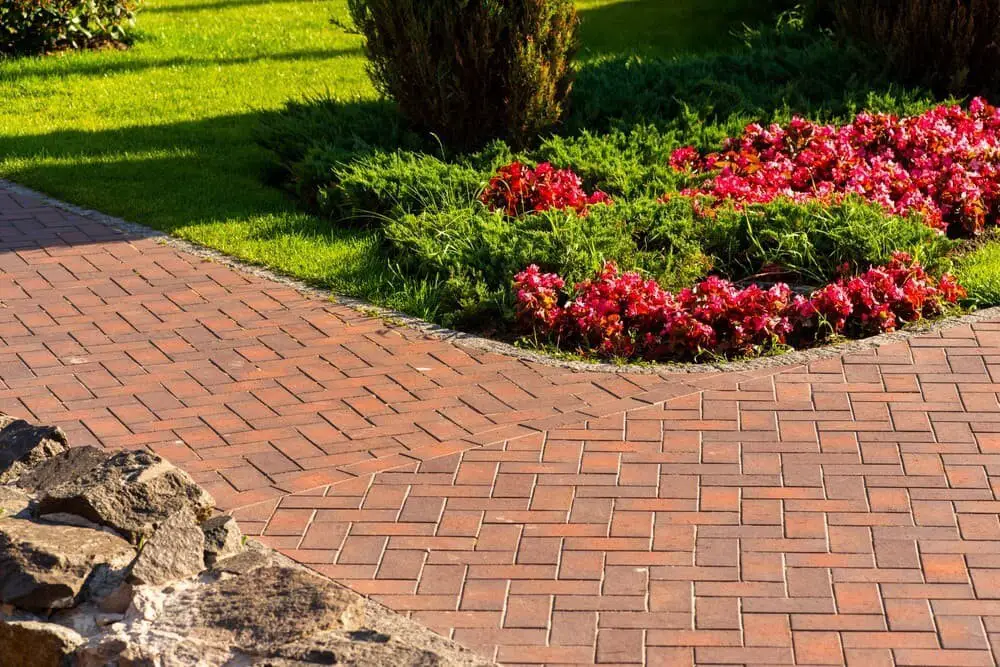
When considering the installation of a brick driveway, it’s essential to weigh the advantages and disadvantages. To make an informed decision, let’s delve into the key points that support and counterbalance the idea of a brick driveway. By examining both sides of the coin, you’ll be better equipped to determine if this option is right for your needs.
Pros
When it comes to environmentally friendly construction materials, brick driveways stand out as a top choice. Made from reclaimed pavers or concrete, they offer a sustainable solution for homeowners looking to reduce their environmental footprint. In contrast to other concrete materials, bricks are designed with flexibility and structural integrity in mind. Their interlocking design allows them to withstand heavy loads and uneven surfaces without cracking or breaking.
The rough surface of brick driveways also provides excellent traction, making them an ideal choice for locations prone to rain or frost. Moreover, the stain-resistant properties of brick mean that oil and fluid leaks can be easily cleaned up, eliminating the need for costly repairs. Additionally, the individual installation of bricks makes maintenance a breeze – if one brick becomes damaged, it can be replaced without having to replace the entire driveway, saving homeowners time and money.
Cons
Bricks may offer limited color options, but when it comes to design flexibility, they can be a bit restrictive compared to other materials. For those who crave more creative freedom, bricks might not be the top choice. In terms of upfront costs, laying bricks is a more labor-intensive process than concrete or asphalt, which means the total price tag for a 10ft driveway can reach around $5000.
Furthermore, interlocking slabs like bricks are prone to weed growth if left unchecked, which can quickly turn an otherwise well-manicured brick driveway into an eyesore. To mitigate this issue, homeowners must take extra steps to lay down hardware cloth and reseal the driveway every three years.
Brick driveway cost
While it may seem like just a matter of laying down bricks, the cost of a brick driveway can vary significantly depending on the size of the area to be covered and the design pattern chosen. For a standard 10ft x 20ft driveway, homeowners can expect to pay between $5000 and $18,000. However, if you’re looking for a more intricate herringbone pattern, that cost jumps up by at least $3000.
Even more elaborate designs with additional color and complexity can add another $5000 or more to the overall price tag.
Brick driveway ideas
To set the stage for the transformation ahead, it’s essential to consider the visual possibilities. To help spark your creativity, here are some straightforward yet striking brick driveway ideas that can elevate your home’s curb appeal.
For instance, you could opt for a classic red brick design with clean lines and a uniform pattern. Alternatively, you might prefer a more rustic look by incorporating natural stone accents or irregularly shaped bricks.
Whatever your style, the key is to find a balance between form and function that reflects your unique taste.
For inspiration, take a closer look at these simple yet stunning brick driveway ideas and see how they can transform your home’s exterior.
Mix and match

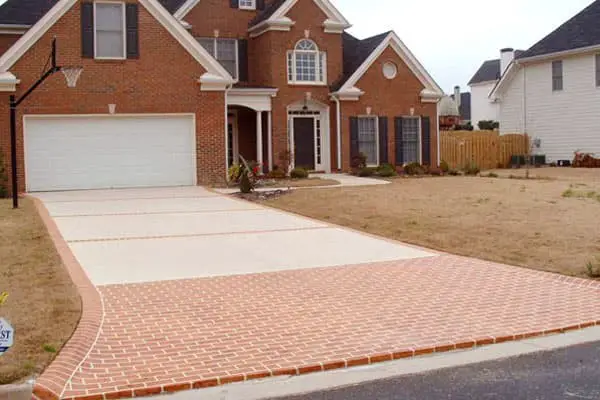

To achieve a charming English cottage look, combining brick, stone, and grass can be a winning combination. For a functional yet visually appealing driveway, consider laying bricks in a pattern that allows for good drainage, preventing water puddling and mud accumulation. This design not only enhances the aesthetic appeal but also makes maintenance a breeze. The classic red brick render paired with concrete slabs creates a timeless look that seamlessly blends with the surrounding brick home.
The result is a durable and low-maintenance driveway that perfectly complements the exterior of the property, as seen in this three-sectional Victorian home featuring a matching brick house and driveway.
Concrete bricks
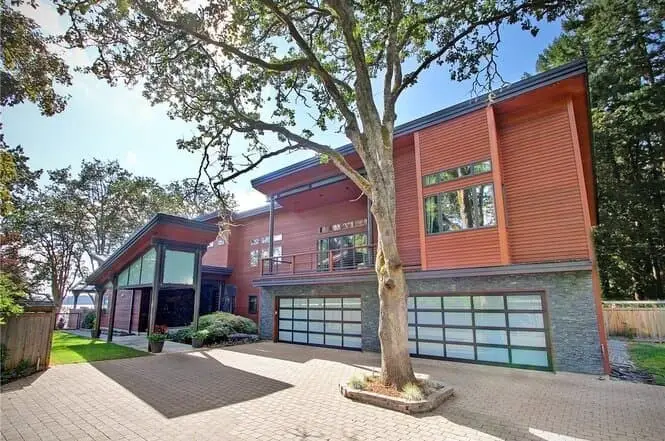
Beyond its impressive durability and water-resistance, concrete bricks can also bring a touch of industrial chic to your driveway’s aesthetic. As we’ve previously discussed in our exploration of the different types of bricks for driveways, concrete bricks offer a unique combination of functionality and style. Their modern appearance is perfect for homeowners seeking a sleek, contemporary look.
Sealed brick driveway

Elevate your home’s aesthetic by incorporating a sealed brick driveway. For a cohesive look, consider lining it with raised, unsealed brick edges that meet lush green turf and thoughtfully pruned shrubs leading up to the porch or main entrance. This timeless combination exudes sophistication and refinement, creating a welcoming ambiance that’s sure to impress.
Multi Colored brick driveway

When it comes to adding some extra flair to your brick driveway, consider painting those bricks with paver paint for a pop of color beyond the traditional red or gray hues. Not only does this elevate the overall aesthetic, but it also serves as a practical solution for marking leaks or oil stains. The lined design can also help to keep weeds at bay, ensuring your driveway remains tidy and well-manicured.
Furthermore, opting for a circular shape injects a sense of dynamism into the space, giving your outdoor area a unique character that’s all its own.
Interlocking pattern


One way to modernize and add visual interest to your driveway is by setting bricks in an interlocking pattern, such as a classic red and gray contrast or a herringbone design with subtle linear edges. This approach not only creates a striking visual appeal but also complements lush green surroundings, evoking the charm of a traditional manor estate.
The angular arrangement of the bricks can be particularly effective in creating a sense of dynamism, making your driveway stand out as an attractive feature of your home’s exterior.
Circular brick driveway pattern
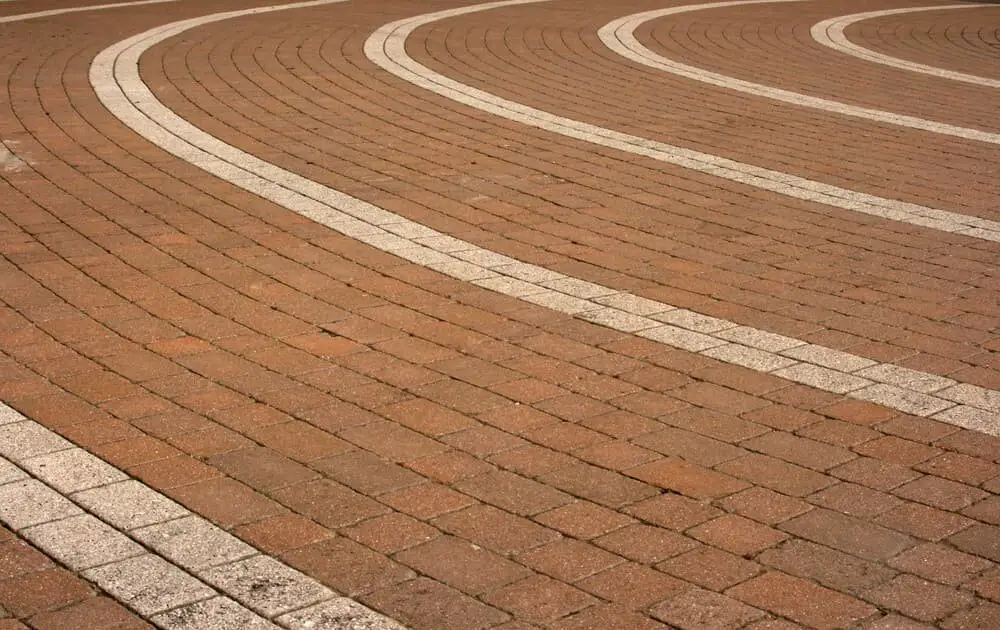

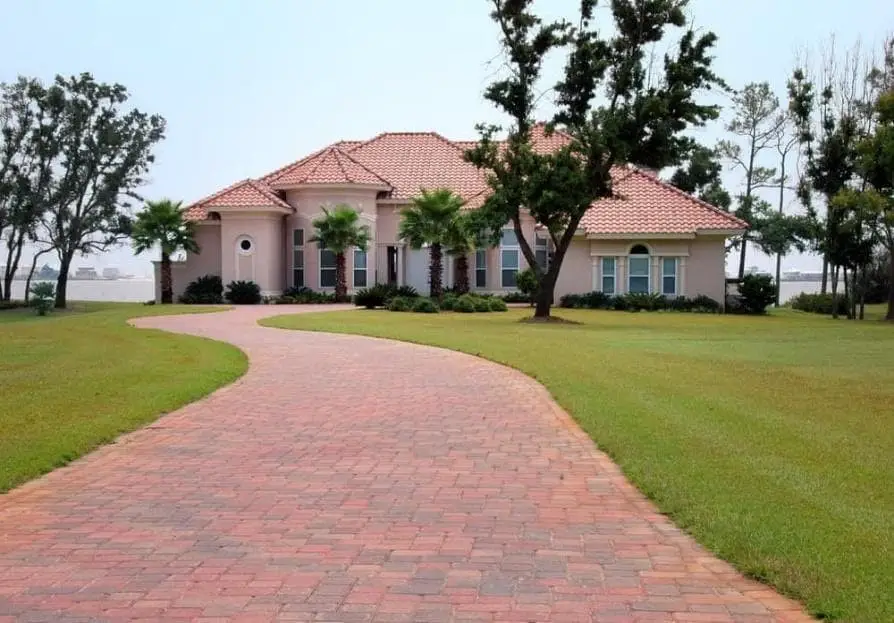
While traditional lines and herringbone patterns are staples of brick driveways, a circular design can add a unique touch to your home’s exterior. This circular pattern not only features a well-coordinated shape but also incorporates small circles for added visual interest. The use of irregular shapes in circular designs can create a sense of depth and dimensionality, adding layers to what would otherwise be a flat surface.
For example, consider incorporating rounded edges or curved lines to give your driveway a dynamic feel. For a more classic look, consider a layered brick design that incorporates the timeless appeal of red bricks. This style can evoke a regal or medieval ambiance, perfect for those looking to make a statement with their home’s exterior. The winding shape of this design adds visual interest and creates a sense of movement, making it an excellent choice for long driveways.
Personalized brick driveway

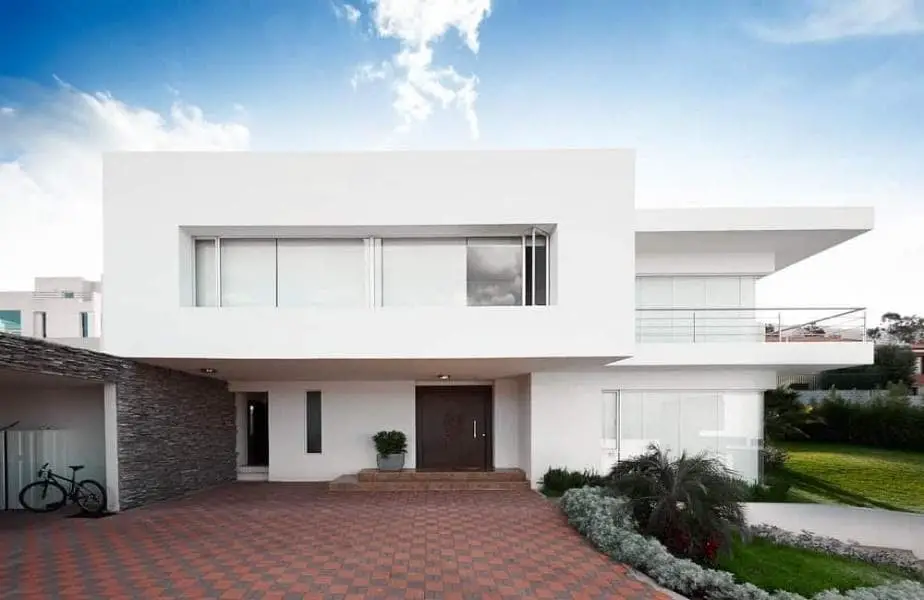
If you want to leave a lasting impression on your property, consider taking your personalized brick driveway to the next level. One creative approach is to incorporate red brick accents into the design, as seen in this example where a B initial has been cleverly formed using these bold elements. Another unique direction to take your personalized brick driveway is to opt for a geometric style.
This bachelor pad features a striking combination of black and maroon bricks that creates a bold contrast against the crisp white exterior of the home. The result is a masculine-looking design that perfectly complements its male-oriented atmosphere.
Herringbone style

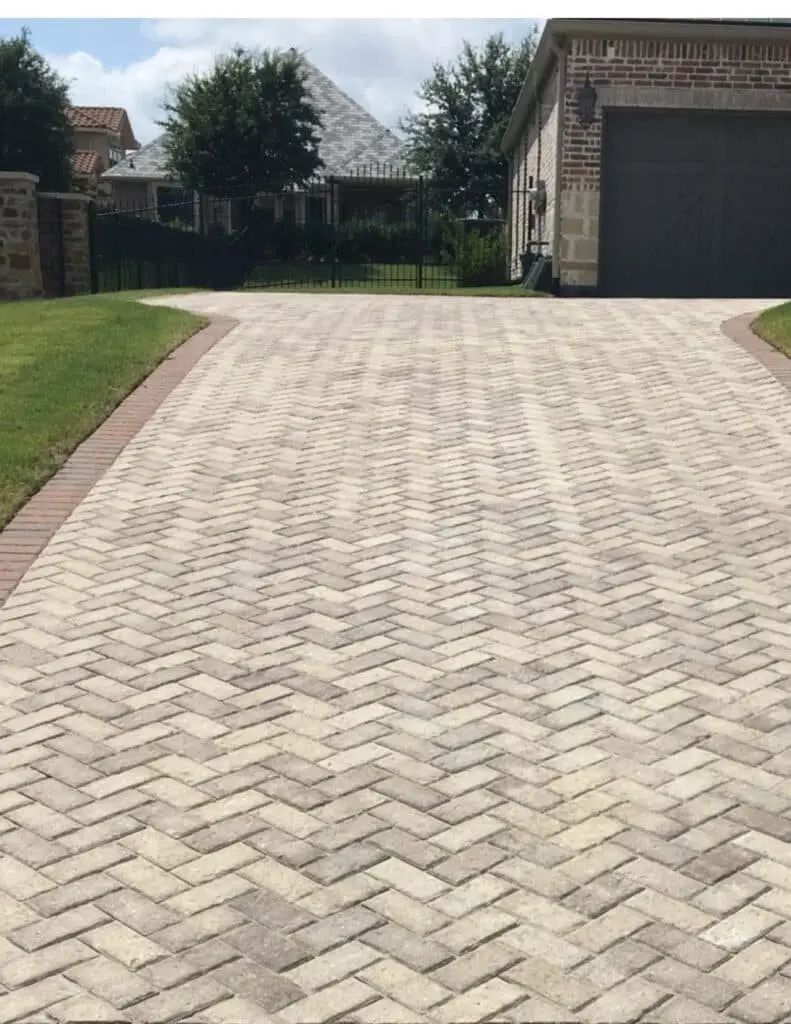

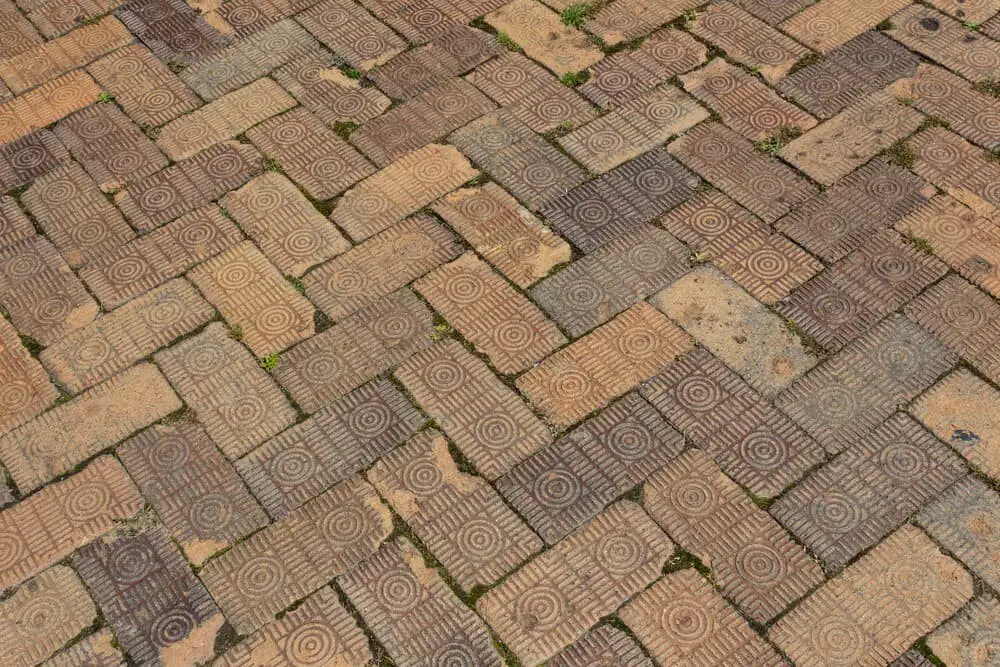
The diagonal herringbone pattern is a popular choice for modern-style brick driveways. This design features bricks arranged in a zigzag pattern, creating a unique and visually appealing aesthetic. Homeowners can choose from a variety of options to customize their driveway’s look, including multicolored and sealed finishes like the one pictured, neutral tones such as white and gray for an industrial-inspired appearance, or bold and modern dark gray hues.
For added inspiration, explore our curated selection of concrete driveway ideas and designs.
How to install a brick driveway
Installing a brick driveway on your own is definitely feasible. To get started, begin by laying out the space for the driveway. Measure the area and mark it with stakes or nylon strings to define the boundaries. Next, excavate the area to a depth of 12-14 inches, ensuring that you compact the raw subgrade soil afterwards. This step is crucial in preparing a stable foundation for your brick driveway. Following this, spread a layer of pea gravel to provide support and facilitate drainage.
Use a rake to even out the gravel base, and then compact it using a plate vibrator or similar tool. Leave at least 2 inches of space on top for the sand layer, using the nylon strings as a guide. Cover the entire area with landscape fabric to prevent weed growth and keep everything in place. Pour 2 inches of sand over the fabric, followed by installation of the plastic brick edge retainer, which can be done according to the manufacturer’s instructions.
The most challenging part is laying the bricks themselves, starting from the center of the driveway and working your way outwards. To secure each brick in place, use a 2×4 wooden plank that’s at least 3 feet long and tap it gently with a rubber mallet every 2 feet. You can also experiment with different patterns, such as herringbone, once you’ve laid the bricks. Finally, fill the joints between the bricks with masonry sand and use a spray hose to settle the sand.
Brick paver driveway repair and maintenance
To prolong the lifespan of your brick driveway by 25-40 years, it’s essential to implement regular maintenance routines. While the surface may still experience wear and tear due to exposure to the elements, a well-maintained driveway can withstand the test of time. To start, commit to daily sweeping with a broom to prevent soil, dust, debris, and leaf buildup. Every two weeks, power wash your driveway to maintain its original appearance.
Additionally, incorporate regular scrubbing sessions using a good bristle brush and your preferred cleaning solution. This will not only keep your driveway looking pristine but also make it more resilient to outdoor elements and easier to clean. Furthermore, it’s crucial to reseal your brick driveway every two years to protect the surface from the elements and maintain its polished appearance.
If you notice any chipped or broken bricks, take immediate action by replacing them with a new one, filler sand, and following the installation process. In the next section, we’ll dive deeper into the steps required for repairing damaged bricks.
How to remove oil stain from brick driveway
Removing oil and fluid leaks from your brick driveway can be an unsightly task. However, with a few simple steps, you can effectively eliminate these stains. If the stain is fresh or small, absorbent sheets are a great option to soak up excess oils. For more stubborn stains, a degreaser can be used. A combination of the degreaser and hot water can prove to be an effective solution for lighter oil stains that have not yet penetrated the brick pavers.
If the stain is particularly severe, consider using professional products specifically designed to clean clay and concrete pavers. These products are widely available at local hardware stores or online. It’s important to note that power washing these stains will not help, but may even worsen the situation by spreading the oil further across the driveway surface.
Brick driveway vs other driveways (asphalt, cement, grass, gravel, concrete)
When exploring the vast array of driveway options available, it’s crucial to understand the unique characteristics that set each apart. This section delves into the primary distinctions between brick driveways and their counterparts, providing a comprehensive comparison.
Brick vs asphalt
One of the primary distinctions between brick and asphalt lies in their upfront cost, with brick pavers generally being more expensive. However, when it comes to creative freedom, brick offers a greater range of design possibilities compared to asphalt. This versatility stems from the fact that brick pavers can be arranged in various patterns, colors, and textures to suit individual tastes and preferences.
In terms of maintenance, asphalt driveways prove to be more straightforward to clean, requiring only a broom and power washer to keep them looking their best. In contrast, while both materials have their own set of maintenance requirements, brick driveways are generally more durable and stable over time, making them a popular choice for homeowners seeking a low-maintenance yet long-lasting solution. Additionally, the repair process is often simpler with brick compared to asphalt.
Brick vs cement and concrete
While poured concrete or cement may offer a more economical solution with its wider range of patterns and colors, it’s essential to consider the maintenance aspect as well. In this regard, cement and concrete are indeed easier to clean and maintain compared to brick. However, when it comes to durability and repair, brick takes the lead due to its superior resistance to wear and tear.
When examining costs and installation processes, there is little difference between the two materials, although high-end stamped concrete can be a more premium option than traditional bricks.
Bricks vs grass and gravel
While cost is a significant consideration when it comes to driveways, the reality is that brick options differ significantly from those made of grass or gravel. However, for locations where harsh weather conditions are prevalent, such as areas prone to strong winds, rain, and frost, brick driveways prove more practical due to their resistance to erosion and displacement. In these environments, the worry about maintenance and repair is greatly reduced.
In terms of upkeep, all three options require some level of maintenance, but fortunately, they are not overly demanding. This simplicity makes them a more appealing choice for homeowners seeking a low-fuss solution.
FAQs
Beyond the foundational concepts we’ve discussed thus far, several other crucial considerations require attention to ensure the longevity and success of your brick driveway. One way to approach this is by addressing common questions and concerns through a series of frequently asked questions (FAQs). By exploring these FAQs, you’ll gain valuable insights and practical advice for maintaining your brick driveway over time.
Can you paint a brick driveway?
While it’s undeniable that bricks are resilient, they can still succumb to wear and tear over time. To breathe new life into your brick driveway, consider revitalizing its appearance through acrylic paver paint. Prior to application, ensure a thorough cleaning with a push broom is performed to guarantee the surface is free of debris, ensuring optimal adhesion and a professional-looking finish.
How much weight can a brick driveway take?
While bricks are renowned for their durability, a brick driveway’s load-bearing capacity is impressive. Capable of withstanding an incredible 15,000 pounds per square inch (psi), it can easily support the weight of one vehicle, which typically registers around 5,000-7,000 psi. In comparison, stone driveways have even greater strength, capable of handling more than 19,000 psi. The takeaway is clear: brick driveways are an incredibly resilient option for outdoor spaces.
How many bricks do I need for a driveway?
When it comes to determining the quantity of bricks needed for a driveway or walls and columns, a general guideline is to calculate approximately 48.5 bricks per square meter. To apply this rule, you’ll need to first compute the area of the driveway in question, then multiply that figure by 48.5. If you’re unsure about your math skills or don’t have the time to perform the calculation, there are online resources available that can help you arrive at the correct number.
How to remove weeds from brick driveway
While chemical solutions like herbicides may be effective in removing weeds from a brick driveway, there are alternative methods you can employ if you prefer a more natural approach. One option is to physically remove the weeds by uprooting them manually. Alternatively, you can try using hot water therapy by pouring boiling water directly on the weeds.
For a more environmentally friendly solution, consider dousing the area with a vinegar and water mixture, or sprinkle table salt or Epsom salt over the affected areas. Additionally, you can also use neem oil or baking soda to help suppress weed growth.
How long do brick driveways last?
When properly maintained through routine cleaning and sealing, a brick driveway can boast an impressive lifespan of up to 25 years before requiring any repairs. With diligent upkeep, this longevity can be extended even further, potentially lasting for 50 to 75 years or more.
Which states still use brick streets?
While it may come as a surprise to some, many US states continue to utilize brick pavers not only for driveways but also for broader roadworks initiatives. The following states employ brick streets for various reasons: Atlanta and Portland, for instance, have opted for this material due to its flood control benefits, while Chicago, Los Angeles, and Philadelphia have chosen it for similar purposes.
On the other hand, Washington, Louisiana, and New Orleans utilize brick roads primarily for speed control and aesthetic value. It’s hardly surprising, given that brick roads have a long history in the US, dating back to the late 1800s when the first brick road was laid in Charleston, West Virginia, all the way back in 1873.
Conclusion
In many ways, brick driveways prove themselves to be commendable options. One of their most notable advantages lies in their durability, low maintenance requirements, and ease of repair. While the initial investment may seem substantial, it ultimately yields long-term benefits that make it a practical choice for homeowners seeking a reliable driveway solution. With proper preparation, the end result is well worth the effort, providing years of dependable service with minimal upkeep.
Related Posts
When it comes to your farm business, choosing the right equipment can be a daunting task. On the other hand, selecting the perfect garage door color to complement your home’s exterior is a crucial decision that can impact its curb appeal. Similarly, deciding on the best driveway sealer and determining whether to tip the service provider are important considerations.
Furthermore, if you’re passionate about designing outdoor spaces, pursuing a career as a landscape architect can be a fulfilling path. In this context, it’s essential to understand what factors to consider when selecting equipment for your farm business, exploring color combinations for garage doors, grasping gratuity etiquette for home services, and gaining insight into the requirements for becoming a landscape architect.

